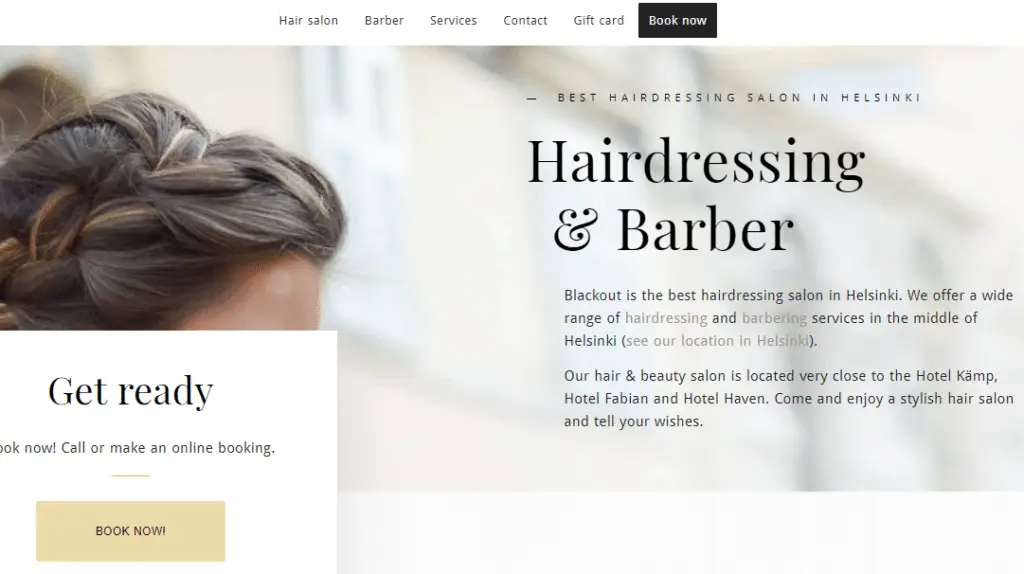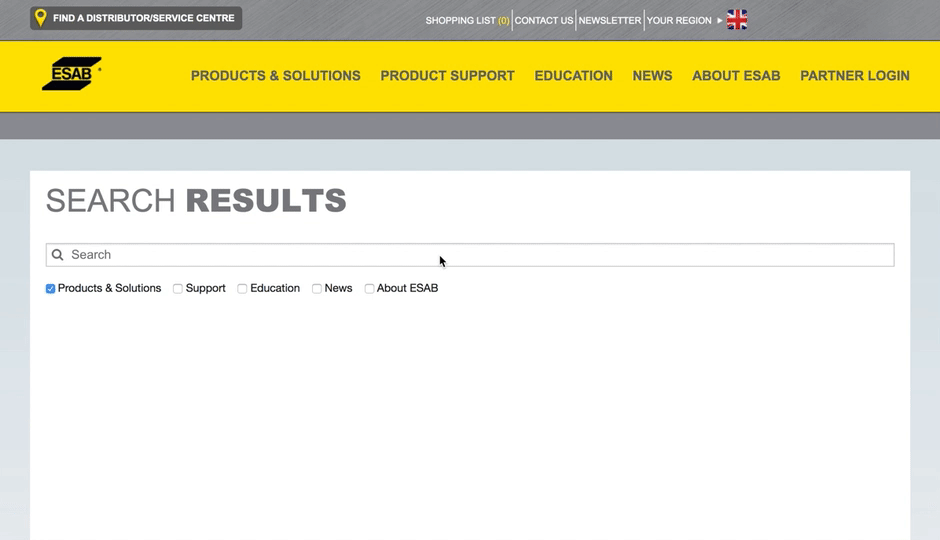Suppose a potential customer or user looking for information can’t immediately find the content they’re looking for on your website. In that case, they’ll likely continue their search elsewhere – something you clearly want to prevent!
Your site’s search and navigation play vital roles in helping users find and discover your content. Hence, it’s critical to invest in optimizing both of these elements so that users can easily and satisfactorily achieve their goals.
The question now arises whether you should focus on tweaking your site search or navigation first – let’s find out now.
Table of Contents
The Roles of Site Search and Navigation
Before we start answering the actual question, let’s first establish a common understanding: What are site search and navigation, and how do they differ? We’re not going to talk about the obvious differences like design and functionality. Instead, let’s look at their specific roles, which users they are particularly interested in, and why.
What Is the Role of Site Search?
Site search plays a crucial role in enhancing user experience by enabling visitors to quickly locate specific information or products within a website. It functions as an internal search tool, allowing users to enter keywords or phrases to find exactly what they’re looking for without navigating through multiple pages. This is especially valuable for users who already have a clear idea of their goal, such as finding a particular product, article, or service. For instance, on an e-commerce site, a user might search for “wireless headphones” to instantly access relevant products instead of browsing through categories.
The effectiveness of site search lies in its ability to save time and reduce friction, ensuring users can effortlessly find what they need. When implemented well, it not only improves usability but also boosts engagement and conversion rates. For example, a recipe blog with a robust site search feature allows users to instantly pull up “vegan lasagna recipes” without scrolling through unrelated content. By prioritizing speed and accuracy, site search transforms how users interact with a website, making it an indispensable tool for both businesses and visitors alike.

Google Search doesn’t even provide you with classic navigation to find content on the www (what would that even look like?). Therefore, you have to use the search bar to reach your goal. Websites like YouTube or Amazon work pretty similarly, as they also offer an unimaginably large amount of content. Suppose you had to find a specific video or product using just the navigation on these platforms. You’d probably sit there for hours and end up getting nothing.
Ultimately, you know that using the search feature on these websites will get you closer to your goal. Even if you first have to come up with a descriptive search term and then comb through a search results list – you will eventually find what you came for.
What is Site Navigation?
Navigation helps users explore a website’s content. Visitors look at navigation items when they don’t (yet) know what they are looking for or when they want to learn about the information a website offers.
Let’s take Amazon as an example again. As you probably know, Amazon offers category navigation to discover different products. Suppose you want to buy a book, but you don’t have a specific one in mind yet. Obviously, you can’t use the search – which search term would you pick anyway? Search Amazon for “book” – you will likely get a list of products with the word “book” in their title, but they aren’t necessarily books.
Hence, to browse the books on offer, you use the menu to go to Amazon’s books section. There, you can then use the category navigation for books to narrow down the offer a little.
Let’s look at another example. Let’s say you are on the hairdressing website shown in the image below to learn more about their services. Since the website is relatively small, it doesn’t even have a search that you could use. But even if it had a search bar, you’d likely still click the Services navigation item to get to the content you want. Here, navigating is much easier and faster than searching.

What Is a Navigational Search (Or Navigation Search) Query?
A navigational search query (also referred to as a directed search) occurs when a user enters a search term with the specific intent of reaching a particular website or webpage. Unlike informational searches, where users seek answers or general knowledge, navigational searches are goal-oriented, aiming to access a known online destination, such as a brand’s homepage, a login page, or a specific product section. For example, searching for “YouTube” or “Spotify login” typically indicates a navigational search, as the user is trying to directly access these platforms.
This type of search behavior highlights the importance of clear and recognizable branding, as well as effective search engine optimization (SEO). When users perform navigational searches, they expect to find their desired destination quickly and effortlessly.
Are There Other Types of Search Queries?
In addition to navigational search queries, search intent can generally be divided into two primary categories: informational and transactional. Informational queries occur when users seek knowledge, answers, or guidance on a specific topic. For example, someone searching for “how to bake a cake” or “what causes climate change” is looking for information to educate themselves or solve a problem. These searches often involve question-based keywords or exploratory phrases.
On the other hand, transactional queries are action-oriented, reflecting a user’s intent to complete a specific task or engage in a transaction. This could include purchasing a product, signing up for a service, or downloading a resource. Examples of transactional searches include “buy iPhone 15 online” or “book a hotel in New York.” These queries often include keywords like “buy,” “order,” “download,” or “book,” signaling the user’s readiness to take the next step. Understanding these distinctions helps businesses tailor their content and SEO strategies to meet user needs effectively.
Which Should You Optimize First – Search or Navigation?
The decision to prioritize optimizing site search or navigation hinges on understanding your audience’s behavior and preferences. While both are critical for a seamless user experience, the choice often comes down to how your users interact with your website. If your analytics reveal that visitors frequently rely on the search bar to find specific products, services, or content, then investing in a robust and intuitive site search function should take precedence. On the other hand, if users tend to navigate through menus and categories, enhancing your site’s navigation structure—making it clear, logical, and easy to use—should be your first focus.
The debate between optimizing search versus navigation has persisted for decades, with compelling arguments on both sides. Proponents of site search argue that it caters to users who know exactly what they want, enabling them to find it quickly. Meanwhile, navigation advocates emphasize the importance of a well-organized menu system for guiding users through your site, especially those exploring or unfamiliar with your content. The key is to let data drive your decision: analyze user behavior, conduct usability tests, and gather feedback to determine which approach aligns best with your audience’s needs. In many cases, a balanced strategy that optimizes both search and navigation will yield the best results.
Navigation Statistics
When it comes to website design, easy navigation remains a top priority for users. Recent data from a 2023 survey by HubSpot reveals that 88% of online consumers are less likely to return to a website after a bad user experience, with poor navigation being one of the primary culprits. This highlights the critical role of intuitive design in keeping users engaged and satisfied.
First impressions are more important than ever. A 2022 study by Nielsen Norman Group found that 47% of users assess a website’s credibility based on its design and navigation within the first few seconds of visiting. If the navigation is confusing or cluttered, users are quick to leave. In fact, 38% of users will stop engaging with a website if the layout is unattractive or difficult to navigate, according to a 2023 report by Sweor.
E-commerce websites, in particular, face significant challenges with navigation. A 2023 study by Baymard Institute found that 24% of users abandon their carts due to complicated navigation or unclear processes. Additionally, 89% of consumers prefer websites with simple, straightforward menus that allow them to find what they need quickly and efficiently.
These statistics underscore the importance of optimizing your website’s navigation. By focusing on intuitive design and user-friendly menus, businesses can reduce bounce rates, improve user satisfaction, and drive higher conversions.
Site Search Statistics
The numbers show that site search converts: not only do the 15% of visitors that use the search function on e-commerce sites generate 45% of their revenue, but a study by eConsultancy showed that site search users were nearly twice as likely to convert than those that didn’t use the search bar.
As explained above, some users want to search for specific content on your website. Others may wish to browse or explore your content to get an idea of what you are offering and what they want. Ultimately, you need to answer the question based on your particular use case. Let’s explore that in more detail.
If your website is quite small, it makes sense to start with tweaking your navigation. But what is a small website? For example, if you only have a few essential company pages like “About Us,” “Contact Us,” “Services,” etc. Do you have a blog, or do you offer different products, documents, or videos? Then, the search is crucial for your users, too. However, if users can easily access all essential information via the menu, improving your site search can usually wait.
With e-commerce sites, image databases, wikis, and other platforms with a wide variety of content and categories, you definitely want to focus on improving site search first. The same is true if you have a large website with many pages and know that users prefer to search. As a rule of thumb, the more content and content types you have, and the more similar they are, the more critical search becomes to your users.
How to Optimize Site Search and Navigation for More Conversions
Regardless of what’s most important to your website, you should ultimately tweak your search and navigation to provide users with intuitive and satisfying experiences. Let’s see how you can do that!
How Can You Tweak Your Navigation?
Improving your website’s navigation is essential for creating a seamless user experience. Here are some actionable steps to refine your navigation design and structure:
- Reevaluate your navigation structure by conducting tree tests. This helps you understand how users interact with your menu and identify potential pain points.
- Opt for a flat hierarchy to keep navigation simple. Avoid overwhelming users with too many layers or submenus. A streamlined structure ensures they can find what they need quickly.
- Follow standards and design best practices. Stick to familiar patterns, like placing the main menu at the top of the page, to make your site intuitive for first-time visitors.
- Make sure your navigation is accessible. It should work seamlessly with screen readers and comply with accessibility guidelines like WCAG (Web Content Accessibility Guidelines).
- Give navigation elements meaningful and understandable titles. Avoid jargon or vague labels, and test different variants to see what resonates best with your audience.
- Make your navigation conveniently usable on mobile devices. With mobile traffic dominating web usage, prioritize responsive design and follow mobile navigation best practices, such as using a hamburger menu for compact layouts.
Implementing these strategies can create a navigation system that is both user-friendly and effective, helping visitors find what they need easily.
How Do You Suggest Internal Site Search Be Optimized?
When optimizing your site search, it helps to consider it from the user’s perspective. Nielsen claims that users are not very good at using search effectively, so keeping it simple and accessible and making the most of available features becomes important.
Site Search Features That Help You Improve User Experience
Poorly designed or implemented search features can make it unnecessarily difficult for your users to leverage site search. Yet, some users may find it challenging to use your search and prefer navigating even if your search UI is perfectly fine. We know about several areas where your search may be lacking or where it could be further improved. Let’s take a look at some common problems that users face while using site search and how to solve them:
Autocomplete users’ search queries
Autocompletion helps make searching more comfortable by eliminating the need to enter complete search queries. Typing on a keyboard can be a tedious activity, especially for the elderly. Clicking navigation items with the mouse is often way easier. What’s more, typing on mobile devices can be even more tricky – even for younger generations – and poses a significant hurdle for some users.

Autocomplete is a perfect way to help these users and make searching less of a hassle. Finally, all of your users can benefit from autocomplete by spending less time typing and getting closer to their desired outcome faster.
Offer Personalized Search Suggestions
For personalized search, your search solution learns about users’ browsing and searching behavior to develop valuable suggestions. Like autocomplete, it helps visitors find what they’re looking for faster and with less effort. Additionally, visitors can discover new and exciting content without putting any effort into it. Site search solutions that provide personalization use knowledge about a user to suggest content they likely find useful. For example, a user primarily interested in Android phones in an electronics store receives Android-related suggestions when looking for a new smartphone.
Ultimately, personalization is a powerful feature that many users already take for granted on e-commerce sites. If you want to utilize it, make sure you are using a capable search solution!
Promote and Boost Specific Content
Is there a category that your users are primarily interested in? Or would you like to guide them to a specific page when they search for keyword X? Then you need to rearrange your search results!
For this, many search solutions allow you to add weight to pages and website sections – and, of course, remove weight from them. This enables you to see more critical content higher up in search results and others further down. Or you may want to pin search results in a specific position to ensure that users get the chance to click on what you think is most relevant.
Again, these features help users find relevant content faster, especially when they struggle to write useful searches and prefer to click on (navigation) links.
Always Deliver Results With Synonyms and Typo Tolerance
As mentioned above, some users may experience difficulty typing, increasing the likelihood of misspellings or typos. Additionally, users often don’t use the same words as your website to describe what they’re looking for.
Either way, your visitors may end up getting no results for their search and turn to use navigation – something you want to prevent in most cases! Put yourself in your audience’s shoes and make an effort to find out how they formulate search queries and what mistakes they make most often. For example, you can look at the most popular search queries and no-hit keywords in your AddSearch analytics dashboard. Then, use what you have learned and add synonyms and known typing errors to your search solution to avoid zero-results pages.
How Do You Pick the Right Search Solution for Your Use Case?
Optimizing site search can be tricky or even impossible if you aren’t using a capable site search solution.
Many search solutions that come with CMS, like WordPress, work well for simple use cases, like small blogs, but lack advanced functionality. That’s why you may have to find a new search solution and integrate it into your website instead of improving your existing one.
Take a look at your search solution’s features and see if they meet your users’ needs. Consider your technical expertise and resources. Some solutions require developers to implement the search interface and get search results through APIs.
Our own search solution, AddSearch, offers you everything you need to create the ideal search for your use case. For this, we also provide you with various options for search implementation. Use ready-made views to get the search up and running quickly, or implement search using our Search UI library and customize it to fit your website’s design. Don’t want to spend time building a search yourself? We’ve got you covered and will be happy to help you with all your site search needs, be it planning, design, or implementation.
Can You Make Site Search and Navigation Both Work for Your Users?
Absolutely! Site search and navigation are not mutually exclusive—they should work together to create a seamless and intuitive digital experience for your users. The key is to understand your audience’s needs and tailor your approach based on your website’s size, complexity, and purpose.
For smaller websites or those with straightforward content, prioritizing navigation is often the best starting point. Ensuring that essential pages like “About Us,” “Services,” or “Contact” are easily accessible through a clear and logical menu structure can significantly enhance user satisfaction. On the other hand, if your site is large, content-rich, or features diverse data—such as e-commerce platforms, wikis, or corporate websites—focusing on site search first can help users quickly locate specific information or products.
Ultimately, the goal is to cater to both types of users: those who search for specific content and those who prefer to explore and browse. By optimizing both site search and navigation, you create a balanced experience that meets the needs of all visitors. Regularly analyze user behavior, conduct A/B testing, and gather feedback to refine both elements.
In the end, success lies in ensuring that site search and navigation complement each other, working in harmony to deliver a user-centric experience that drives engagement, reduces bounce rates, and boosts conversions. By striking this balance, you can create a website that truly serves your audience’s needs.









